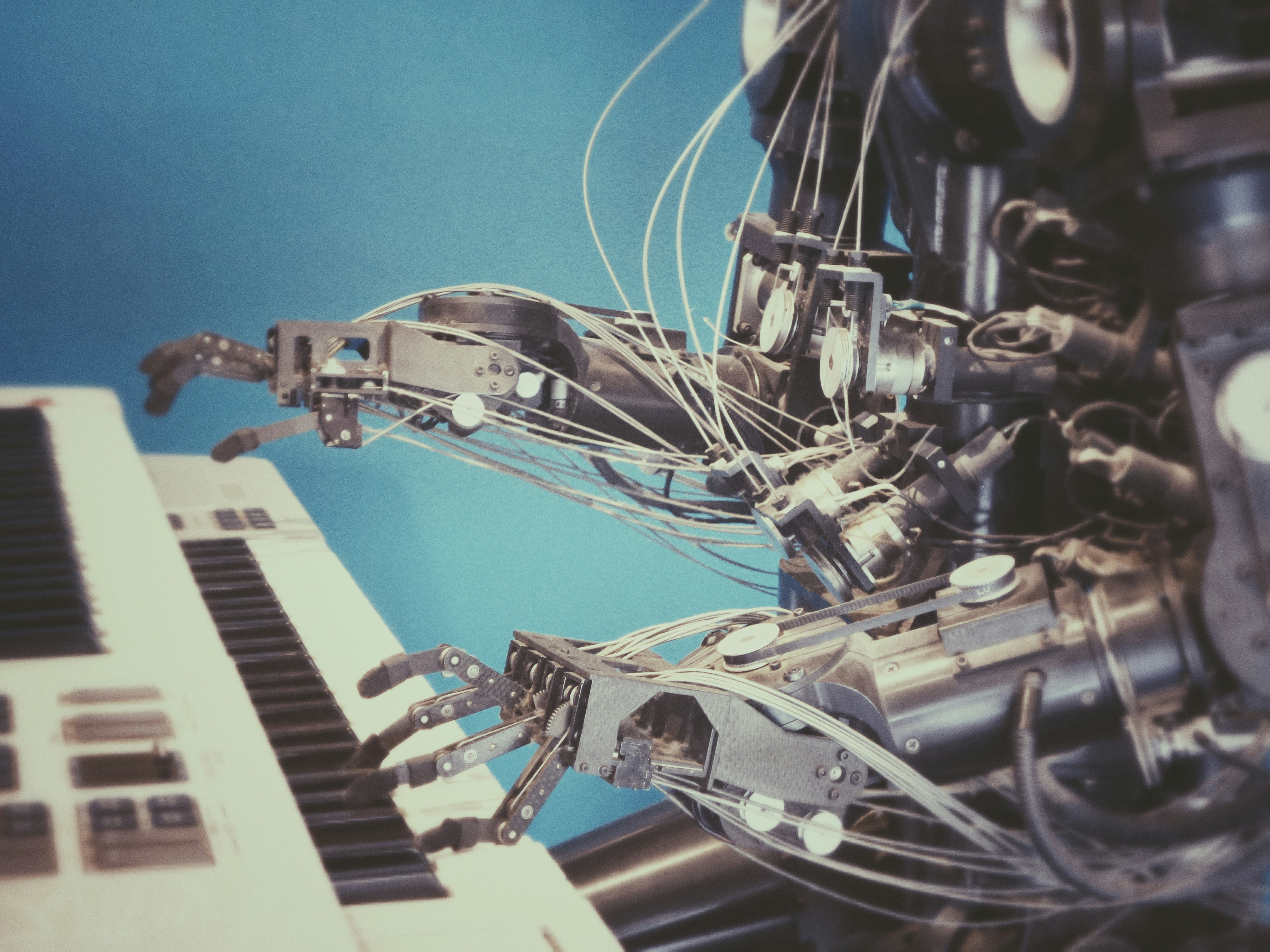
Machine Learning and Robotics Jobs: Exploring Careers, Skills, and Leading Companies
The realms of Machine Learning (ML) and Robotics are increasingly converging, creating a dynamic landscape of job opportunities and innovation. This integration is revolutionising industries by enhancing automation, efficiency, and intelligence in systems and processes. As ML algorithms enable robots to learn from data, adapt to new scenarios, and perform complex tasks, the demand for professionals skilled in both domains is surging. This article delves into the synergy between ML and robotics, explores key job roles and required skills, and highlights leading companies at the forefront of this transformative field.
Jump to the bottom of this article for the latest Robotics Jobs
The Synergy Between Machine Learning and Robotics
Machine Learning and Robotics complement each other in numerous ways. Machine Learning provides the intelligence that allows robots to make decisions based on data, while robotics offers the physical embodiment that can interact with the real world. This synergy leads to the creation of intelligent systems capable of performing tasks autonomously, improving over time through continuous learning.
In practical terms, ML algorithms are used to enhance robotic capabilities in various ways, such as:
Perception: Enabling robots to understand their environment through computer vision and sensor data processing.
Decision Making: Allowing robots to make informed decisions using reinforcement learning and other AI techniques.
Autonomous Navigation: Guiding robots to navigate complex environments without human intervention.
Human-Robot Interaction: Facilitating natural and effective communication between humans and robots through NLP and sentiment analysis.
Key Job Roles in Machine Learning and Robotics
Robotics Engineer
Responsibilities: Designing, building, and maintaining robots, including their hardware and software components.
Skills: Mechanical engineering, electrical engineering, computer science, proficiency in programming languages such as C++ and Python, knowledge of control systems, and experience with CAD tools.
Machine Learning Engineer
Responsibilities: Developing ML models and algorithms to enhance robotic systems, working on data preprocessing, and implementing scalable solutions.
Skills: Strong foundation in mathematics and statistics, expertise in ML frameworks like TensorFlow and PyTorch, proficiency in Python or R, and knowledge of deep learning techniques.
Computer Vision Engineer
Responsibilities: Creating and implementing algorithms that allow robots to interpret and understand visual information from the world.
Skills: Proficiency in computer vision libraries like OpenCV, experience with convolutional neural networks (CNNs), and a deep understanding of image processing techniques.
Natural Language Processing (NLP) Engineer
Responsibilities: Developing systems that enable robots to understand and respond to human language.
Skills: Strong programming skills, expertise in NLP libraries such as NLTK and spaCy, understanding of linguistics, and experience with transformer models like BERT.
AI Product Manager
Responsibilities: Overseeing the development and deployment of AI-powered robotics products, coordinating between different teams, and defining product roadmaps.
Skills: Strong understanding of AI and ML concepts, excellent leadership and communication skills, experience in product management, and strategic thinking.
Robotics Software Engineer
Responsibilities: Developing and maintaining the software that controls robots, ensuring their efficient operation.
Skills: Proficiency in software development, knowledge of ROS (Robot Operating System), experience with embedded systems, and strong problem-solving abilities.
Robot Technician
Responsibilities: Installing, maintaining, and repairing robots, ensuring they function correctly and efficiently.
Skills: Technical expertise in robotics hardware, experience with diagnostic tools, ability to troubleshoot mechanical and electronic issues, and proficiency in relevant software.
Data Scientist
Responsibilities: Analysing data collected by robots to improve their performance and functionality.
Skills: Expertise in statistical analysis, proficiency in data manipulation tools like SQL and Pandas, experience with data visualisation tools, and knowledge of ML techniques.
Automation Engineer
Responsibilities: Designing and implementing automated systems that integrate robotics and ML to streamline operations.
Skills: Knowledge of industrial automation systems, experience with PLC programming, understanding of ML algorithms, and proficiency in relevant programming languages.
Human-Robot Interaction Specialist
Responsibilities: Enhancing the interaction between humans and robots to ensure intuitive and effective communication.
Skills: Understanding of human factors and ergonomics, experience with user interface design, knowledge of NLP, and proficiency in programming.
Essential Skills for a Career in ML and Robotics
To thrive in the intersection of ML and robotics, professionals need a blend of technical and soft skills. Key skills include:
Programming: Proficiency in languages such as Python, C++, and Java.
Mathematics and Statistics: Strong foundation in linear algebra, calculus, and probability.
ML Frameworks: Experience with TensorFlow, PyTorch, Keras, and other ML libraries.
Robotics Software: Familiarity with ROS, Gazebo, and other robotics development environments.
Computer Vision: Knowledge of OpenCV and deep learning techniques for image processing.
NLP: Expertise in NLP libraries and understanding of linguistic concepts.
Problem-Solving: Ability to tackle complex problems and develop innovative solutions.
Communication: Strong verbal and written communication skills to collaborate effectively with multidisciplinary teams.
Top 10 Companies Leading in ML and Robotics
Boston Dynamics
Known for creating advanced robots like Spot and Atlas, Boston Dynamics integrates ML to enhance their robots' agility and autonomy.
NVIDIA
A leader in AI and ML hardware and software, NVIDIA's GPUs and platforms like Jetson power numerous robotic applications.
iRobot
Famous for its Roomba vacuum cleaners, iRobot uses ML to improve navigation and cleaning efficiency.
ABB Robotics
ABB provides industrial robots and automation solutions, leveraging ML to optimise performance and productivity.
Intuitive Surgical
Known for the da Vinci surgical system, Intuitive Surgical uses ML to assist in complex robotic surgeries.
Waymo
A subsidiary of Alphabet, Waymo focuses on autonomous driving technology, employing ML for navigation and decision-making.
KUKA Robotics
KUKA develops industrial robots and automation solutions, using ML to enhance flexibility and precision.
Blue River Technology
Acquired by John Deere, Blue River Technology uses ML in agricultural robotics to improve crop management and yield.
Fetch Robotics
Specialises in autonomous mobile robots for logistics and warehousing, integrating ML for efficient navigation and task execution.
OpenAI
An AI research organisation, OpenAI develops advanced ML models and algorithms that drive innovation in robotics and other fields.
The Future of Machine Learning and Robotics
The future of ML and robotics is poised for unprecedented growth and innovation, driven by continuous advancements in technology and expanding applications across various industries. Several trends and developments are shaping this future:
Increased Autonomy and Intelligence
As ML algorithms become more sophisticated, robots will achieve higher levels of autonomy. Future robots will not only perform predefined tasks but also adapt to new environments and learn from their interactions. This will lead to smarter robots capable of complex decision-making and problem-solving.
Collaborative Robots (Cobots)
The rise of collaborative robots, or cobots, is a significant trend. Unlike traditional industrial robots, which operate in isolation, cobots are designed to work alongside humans, enhancing productivity and safety. These robots will leverage ML to understand human behaviour, making interactions more seamless and efficient.
Integration with IoT
The Internet of Things (IoT) will play a crucial role in the evolution of ML and robotics. By connecting robots to a network of devices and sensors, real-time data can be used to optimise performance and enable predictive maintenance. This integration will lead to more responsive and adaptive robotic systems.
Advanced Human-Robot Interaction
Improvements in NLP and computer vision will enhance human-robot interaction. Future robots will better understand and respond to human language and emotions, making them more effective in roles such as customer service, healthcare, and education.
Ethical and Social Implications
As robots become more prevalent, addressing ethical and social implications will be crucial. Ensuring fair and unbiased AI algorithms, safeguarding privacy, and creating regulations for autonomous systems will be essential to foster trust and acceptance in society.
Industry-Specific Innovations
Different industries will witness tailored innovations in robotics and ML. For instance, healthcare robots will perform more precise surgeries and provide patient care, while agricultural robots will optimise farming practices through data-driven insights. Each sector will benefit from specialised robotic solutions that address unique challenges.
Workforce Transformation
The integration of ML and robotics will transform the workforce. While some jobs may be automated, new roles will emerge, requiring skills in AI, data analysis, and robotics maintenance. Continuous learning and reskilling will be vital for professionals to stay relevant in this evolving landscape.
Conclusion
The integration of Machine Learning and Robotics is creating a fertile ground for innovation and job opportunities. As these fields continue to evolve, the demand for skilled professionals who can bridge the gap between data and physical systems will only grow. By acquiring the right skills and staying abreast of industry developments, aspiring ML and robotics professionals can position themselves at the forefront of this transformative wave. Companies like Boston Dynamics, NVIDIA, and iRobot are leading the charge, setting the stage for a future where intelligent robots become an integral part of our daily lives.
The future of ML and robotics promises increased autonomy, smarter interactions, and significant industry-specific advancements. As technology continues to advance, the possibilities are limitless, making it an exciting time to be part of this ever evolving field.


